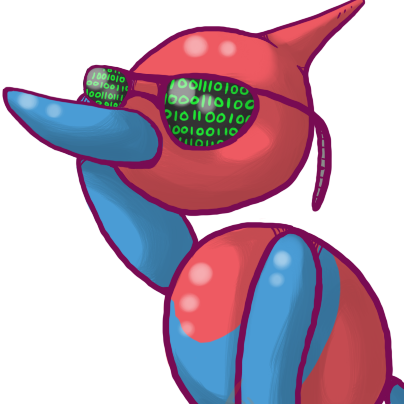I recently got a few (5) hard drives to turn my home server into a NAS with trueNAS scale and my idea is to have 4 usable and 1 for redundancy, my question is… How does RAID work, like what is RAID 0, RAID 5, software RAID etc, and does any of that even matter for my use case?
You have a 5GB file:
RAID 0: Each of your 5 disks stores 1GB of that data in alternating chunks (e.g. the first disk has bytes 1, 6, 11, second disk has 2, 7, 12, etc), occupying a total of 5GB. When you want to access it all disks read in parallel so you get 5x the speed of a single disk. However if one of the disks goes away you lose the entire file.
RAID 1: The file is stored entirely on two disks, occupying 10GB, giving a read speed of 2x, and if any single disk fails you still have your entire data.
RAID 5: Split the file in only 3 chunks similar to above, call them A, B and C, disk 1 has AB, disk 2 has BC, disk 3 has AC, the other two disks have nothing. This occupies a total of 10GB, it’s read at most st 3x the speed of a single disk, but if any single one of the 5 disks fails you still have all of your file available. However if 2 disks fail you might incur in data loss.
That’s a rough idea and not entirely accurate, but it’s a good representation to understand how they work on a high level.
Better explanation of raid 5:
You have 5GB of data and 5 disks. You split your data into 4 parts and split one on each disk. Then disk 5 remembers if there is an odd or even number of 1s on the other disks. So whichever disk fails you can count if it was odd or even. So you loose 1 disk but keep full capacity of the other disks. No doubling like suggested before
If you have four drives you can do RAID 6 assuming your controller supports it.
RAID 0 just puts your data on multiple drives, giving you higher read/write speeds but with no built in redundancy.
RAID 1 is just a copy, you have your data duplicated so that if anything fails there’s an immediate copy. No increase in RW speeds.
RAID 5/6 use “parity data” which operates somewhat like RNA/DNA when going through mitosis. The four building blocks TCGA only connect with one of the other four in pairs of two, so even if you have half the data (RNA) you know what the other half is by logical extension. The difference is that 5 uses 3 drives at a time whereas 6 uses 4, you can only withstand the failure of one drive in RAID 5 but 6 can handle the loss of two.
RAID 10 (one-zero, not “ten”) does exactly what the name suggests, it combines the direct copy of RAID 1 with the striping of RAID 0 to give you double RW speeds with redundancy.
Each one will reduce your overall storage by a certain amount, either because of copying the data completely or taking up space for “parity data.” The only one that doesn’t do this is RAID 0 but you have absolutely no redundancy there and if You’re considering RAID for home use I’m going to assume that’s important to you.
I liked the mitosis analogy. May I borrow it?
Might as well, I think it’s how my instructor taught it when I was going through school.
I thought RAID1 enabled faster reads too, because both drives have the complete file. Writes don’t get a speed bump ofc, since those are still bottlenecked by the slowest single drive in the array
That could be, I was trained in systems admin but work as a network engineer by profession. I’ve only set up one server in an enterprise environment and it was using RAID 6.
I’d assume you could read from both disks at the same time though.
If you’re using TrueNAS it already has some types of RAID it wants to do. Assuming your 5 drives are the same size what you want is called RAIDz1 (1 standing for one drive worth of redundancy).
It is a type of RAID5, which means instead of having 5x usable storage you reserve 1x for redundancy information spread out across the 5, and get only 4x usable space.
Since you’re a beginner you get the usual lecture: RAID is not backup. RAID allows a certain number of your drives to fail without losing any data; it spreads the risk of hardware failure.
RAID won’t help if you delete a file or accidentally explicitly format the wrong drive or even the whole array, and won’t help if the PC is stolen or struck by lightning or burns in a fire.
The solution used by TrueNAS (ZFS) has something called snapshots that can help with modified or deleted files.
For anything else you have to consider which of your files are “my world has ended”-level of important and backup to a HDD in a drawer, or to Blu Ray discs, or online to the cloud.
To add, unlike “traditional” RAID, ZFS is also a volume manager and can have an arbitrary number of dynamic “partitions” sharing the same storage pool (literally called a “pool” in zfs). It also uses checksumming to determine if data has been corrupted. On redundant setups it will then quietly repair the corrupted parts with the redundant information while reading.
Acronyms, initialisms, abbreviations, contractions, and other phrases which expand to something larger, that I’ve seen in this thread:
Fewer Letters More Letters NAS Network-Attached Storage PCIe Peripheral Component Interconnect Express RAID Redundant Array of Independent Disks for mass storage SSD Solid State Drive mass storage ZFS Solaris/Linux filesystem focusing on data integrity
5 acronyms in this thread; the most compressed thread commented on today has 6 acronyms.
[Thread #352 for this sub, first seen 14th Dec 2023, 12:15] [FAQ] [Full list] [Contact] [Source code]
deleted by creator
Seconded. ZFS needs to see the physical devices, so hardware RAID is out. It implements a RAID-5-like parity-based software solution called RAID-Z, and is capable of disk mirroring.
It can work with hardware RAID or with a single physical disk, but don’t expect it to last for a long time, and definitely don’t use it beyond testing.
You won’t be using a traditional RAID with TrueNAS Scale. You have a choice of Stripe, Mirror, RAIDZ1, RAIDZ2, RAIDZ3, dRAID1, dRAID2, dRAID3. The docs are very detailed, so you should read up on RAIDZ and the other types elsewhere, too.
0: “i don’t care about my data.”
1: “i REALLY care about my data”
5: “i’ll trade you one drive now, for my data if one of the drives dies later”
That is a way too broad question to be answer here and also depends on the file-system truenas uses.
If I remember correctly it uses ZFS by default and you can easily find some articles explaining the different raid levels of OpenZFS online.
Edit: ZFS is not the same as other file-systems so not all of the general RAID info you can find online is 1:1 applicable for it (same with btrfs).
Other people gave a good explanation of raid and some alternatives like zfs in truenas.
You want to avoid RAID5 with drives above 4TB. Every hard drive has can have an unrecoverable read error (URE) during the read. It’s a very low percentage change that your hard drive publishes. During a raid 5 rebuild after replacing a drive, the other drives are stressed for a long time during the rebuild. With high capacity drives you have a pretty large chance of encountering a URE and losing the entire array. The high stress on the drives can also cause drive failure if another drive was on its way out.
I run truenas core at home in volumes that looks like raid 10. Two mirror volumes striped together for performance.
I never played around with raidz1 (like raid 5) but you still have the chance of an URE during the resilver. I can’t comment if it’s possible or what happens during an error. I did see people recommending raidz2 to allow for two disc failures from losing data during a resilver.
All my disks are 2TB so it shouldn’t be a massive issue
I personally wouldn’t use raidz1 because it seems too risky to me. I’d have higher redundancy.
Some links
https://www.truenas.com/community/threads/raidz1-vs-raid-5-ures.42598/
https://www.truenas.com/community/threads/5x-4tb-raidz1-array-rebuilding-with-nre-ure-issue.13719/
https://magj.github.io/raid-failure/
The last link is talking about actual raid and not zfs. But it has a 50/50 chance with a URE rate of 10^14 to lose the array. Raidz1 maybe won’t have that catastrophic of a failure, but you’d still be rolling the dice on some corruption.
this is what chatgpt is made for
already tried, did not help that much
and they say AI will take over the world…hm
The level of raid is fundamental to the operation of your raid array.
As I recall, RAID 0 is striping. It will give you faster throughput because your array can pull values out of multiple drives at once. RAID 1 is mirroring. In that, half of the drives are used for data, and the other half are used to back up the first half. RAID 5 is parody, and that’s what you’re looking for. Essentially, your drives will mostly be used for storing data come up with the last one will be used to track what information is on the other four, so you will have one drive for redundancy and the other four will be storing data.
Hardware raid versus software raid matters to the extent that parity calculations are relatively expensive and so if you’re trying to do RAID 5 on software raid, that’s going to eat up more of your CPU power and reduce your drive throughput.
I don’t recall truenas in particular, and what you using the nas for is really what is important, but I do recall that some Nas software doesn’t even want you to be using hardware raid because it will be using its own software algorithms that are separate from what you would typically consider to be raid.
Raid 5 is parity, not parody 😀. Each drive contains part of the information of the other drives, so that if any one of the drives dies, you can still get all the information (it will just be slower until you replace it and the system rebuilds the data on the new drive).
deleted by creator









